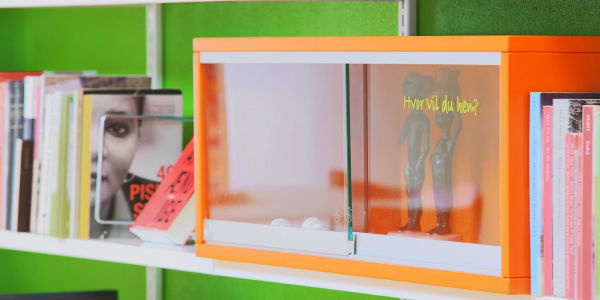Library Furniture And Genrefying A Colour-Coded Library Classification System

Restructure your school library with an impressive genrefication process
Although library classification has been in discussion for ages, libraries still follow around the Dewey decimal system due to sheer laziness of adopting a new system. However, of late, many librarians are coming out in support of a genrefication system that is more user-centric or student-centred. This article takes you through a fantastic colour-coded genrefication model, which is sure to make your students gape in awe. While the whole rearrangement process would take an enormous amount of your time, it is a recommended activity for those who would like to weed out the irrelevant books in your library bookshelves. Follow this simple five-step process to achieve a simple colour-coded library classification system.
Restructuring your school library classification system
If impressive library furniture and a vast collection of books adorn your school library, then it is high time that you restructure the library that is student-centric. But before jumping into the restructuring process, you must go around the library bookshelves to assess your book collection and also to be aware of the popular demands of students.
Determine your genres
Genrefication is immensely a user-centric process that takes into account the requirements of the students and helps in developing a personalized library classification system for your school. Determining the genres for your school libraries in this system essentially depends upon the need of the students who visit the library. For example, if your students demand a specific genre, convert those popular requests into particular genres and label your library accordingly.
Labelling the books
After the genre classification, comes the labelling. Assign specific colours to each genre and use a colour tinted label for each book over the spine label. This model has a significant visual impact on students as they can easily pick up their books according to the colours. Labelling the books also allows you to weed out irrelevant books out of the library bookshelves that have been blocking the space for newcomers.
Shifting the books
Once the labelling is over, it's time to shift or squeeze the colour labelled books in new shelves or in existing ones. This may require quite a lot of labour as a lot of shifting has to be done, and some sections might even require new space to accommodate.
Manage library space better
Make essential catalogue changes.
Catalogue entry is crucial for categorizing library books and making sure that any catalogue change suits your students as well. The call number prefix can be changed to genre category letter to signify specific genres.FA for fiction Action/Adventure, FC for Fiction Literary classics, FF for Fiction Fantasy/ science fiction or Fiction sports are some examples of how catalogue entries can be modified.
Signage in the library
Getting lost amongst the hordes of library bookshelves and library tables is usual if your library is vast. Ensure that proper signage is posted to guide the students to the right books. Signage is also regarded as essential steps of genrefication. With more detailed genrefication leading the way, fiction and non-fiction classifications can further help the students to learn and understand the two types. Incorporating genrefication in school libraries not only educates students about the classifications but is also a fantastic way of organizing book collection and improving the library space.
Read More : Important Tips To Consider While Selecting School Laboratory Furniture
